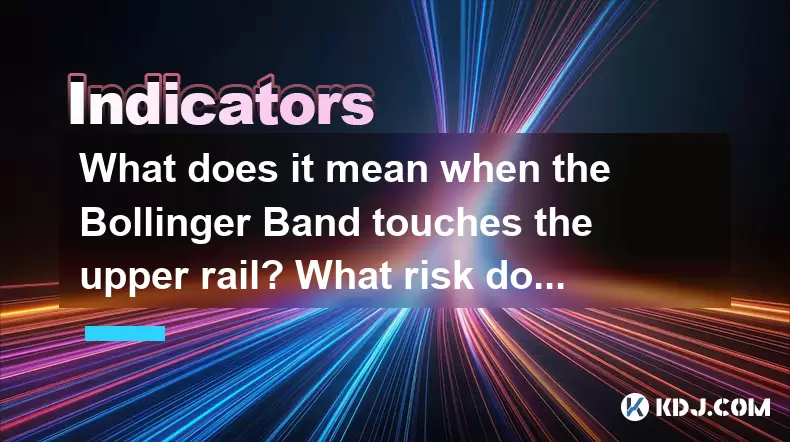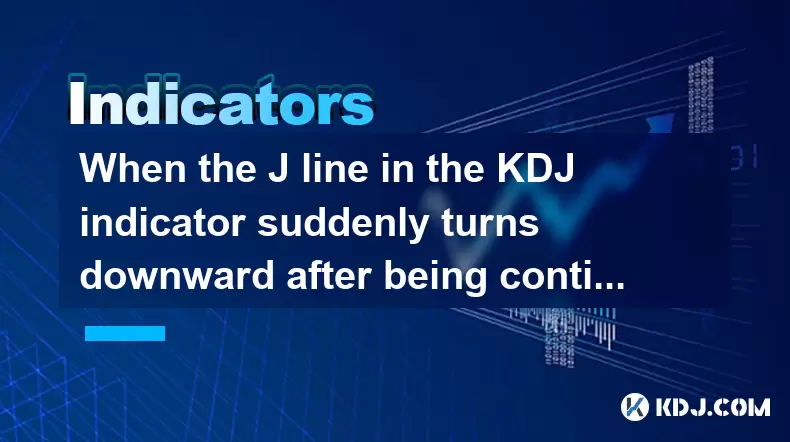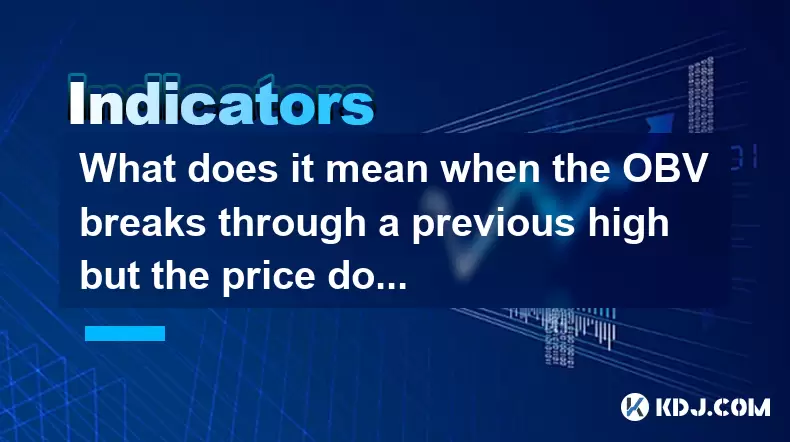-
 Bitcoin
Bitcoin $116700
0.24% -
 Ethereum
Ethereum $3973
4.34% -
 XRP
XRP $3.283
7.68% -
 Tether USDt
Tether USDt $1.000
0.01% -
 BNB
BNB $789.8
2.27% -
 Solana
Solana $176.2
3.31% -
 USDC
USDC $0.9999
0.00% -
 Dogecoin
Dogecoin $0.2238
5.14% -
 TRON
TRON $0.3389
-0.51% -
 Cardano
Cardano $0.7907
4.03% -
 Stellar
Stellar $0.4527
10.02% -
 Hyperliquid
Hyperliquid $41.07
4.27% -
 Sui
Sui $3.794
1.77% -
 Chainlink
Chainlink $19.49
10.40% -
 Bitcoin Cash
Bitcoin Cash $580.9
0.74% -
 Hedera
Hedera $0.2617
4.32% -
 Avalanche
Avalanche $23.41
3.67% -
 Ethena USDe
Ethena USDe $1.001
-0.03% -
 Litecoin
Litecoin $122.4
1.38% -
 Toncoin
Toncoin $3.364
1.49% -
 UNUS SED LEO
UNUS SED LEO $8.988
0.37% -
 Shiba Inu
Shiba Inu $0.00001295
2.82% -
 Uniswap
Uniswap $10.62
5.75% -
 Polkadot
Polkadot $3.922
4.46% -
 Dai
Dai $1.000
0.01% -
 Bitget Token
Bitget Token $4.494
2.15% -
 Monero
Monero $268.0
-1.30% -
 Cronos
Cronos $0.1523
3.68% -
 Pepe
Pepe $0.00001127
4.43% -
 Aave
Aave $285.4
4.85%
What does it mean when the Bollinger Band touches the upper rail? What risk does it imply when it falls below the lower rail?
When a crypto price touches the upper Bollinger Band, it may be overbought, signaling a potential correction; falling below the lower band suggests it's oversold, hinting at a rebound.
Jun 02, 2025 at 12:08 am

When analyzing cryptocurrency price charts, the Bollinger Bands are a popular technical indicator used to assess volatility and potential price movements. Understanding the implications of the price touching the upper rail or falling below the lower rail is crucial for traders. This article delves into what these events signify and the risks associated with them.
What Are Bollinger Bands?
Bollinger Bands consist of a middle band being a simple moving average (SMA), typically over 20 periods, and two outer bands that are standard deviations away from the middle band. The upper band is calculated by adding two standard deviations to the SMA, while the lower band subtracts two standard deviations from the SMA. This setup creates a channel that reflects the volatility of the asset's price.
When the Price Touches the Upper Rail
When the price of a cryptocurrency touches the upper Bollinger Band, it often indicates that the asset is overbought. This means that the price may have risen too quickly and could be due for a correction or a period of consolidation. Traders typically view this as a signal that the momentum might be waning, and a potential reversal could be on the horizon.
It's important to consider other indicators and market conditions when the price touches the upper rail. For instance, if the Relative Strength Index (RSI) also shows overbought conditions, it strengthens the case for a potential price drop. However, if the broader market trend is bullish, the price might continue to rise after a brief pullback.
Risks When the Price Falls Below the Lower Rail
Conversely, when the price of a cryptocurrency falls below the lower Bollinger Band, it is often interpreted as an oversold condition. This suggests that the price may have dropped too far too fast and could be due for a rebound. Traders might see this as an opportunity to buy, anticipating that the price will recover.
However, there are significant risks associated with this scenario. If the price continues to fall below the lower rail, it could indicate a more severe bearish trend. It's crucial to use additional indicators to confirm the oversold condition and not to rely solely on the Bollinger Bands. For example, if the Moving Average Convergence Divergence (MACD) also shows bearish signals, the risk of further price decline increases.
Using Bollinger Bands in Trading Strategies
Traders often use Bollinger Bands as part of a broader trading strategy. Here are some common ways to incorporate Bollinger Bands into your analysis:
- Breakout Strategy: When the price breaks above the upper band, it can signal the start of a new upward trend. Conversely, breaking below the lower band might indicate the beginning of a downtrend.
- Mean Reversion Strategy: If the price touches the upper or lower band and then moves back towards the middle band, it might suggest that the price is returning to its mean. Traders might enter positions based on this reversion.
- Squeeze Strategy: When the bands narrow significantly, it suggests a period of low volatility. A subsequent expansion of the bands could signal the start of a new trend, either up or down.
Combining Bollinger Bands with Other Indicators
To enhance the effectiveness of Bollinger Bands, traders often combine them with other technical indicators. Here are some examples:
- RSI: As mentioned earlier, combining Bollinger Bands with RSI can help confirm overbought or oversold conditions.
- MACD: The MACD can provide additional insights into momentum and potential trend changes.
- Volume: High trading volume when the price touches the upper or lower band can confirm the strength of the move.
Practical Application: Trading When the Price Touches the Upper Rail
Let's walk through a practical example of how to trade when the price touches the upper Bollinger Band:
- Identify the Signal: Notice when the price touches or breaks above the upper band.
- Confirm with Other Indicators: Check the RSI for overbought conditions. If the RSI is above 70, it supports the overbought signal from the Bollinger Bands.
- Assess Market Context: Consider the broader market trend. If the market is bullish, the price might continue to rise after a brief pullback.
- Enter a Position: If you believe a correction is likely, you might consider shorting the cryptocurrency or taking profits on long positions.
- Set Stop-Loss and Take-Profit Levels: Place a stop-loss above the recent high to limit potential losses if the price continues to rise. Set a take-profit level at a reasonable support level where the price might find a bottom.
Practical Application: Trading When the Price Falls Below the Lower Rail
Similarly, here's how to trade when the price falls below the lower Bollinger Band:
- Identify the Signal: Notice when the price touches or breaks below the lower band.
- Confirm with Other Indicators: Check the RSI for oversold conditions. If the RSI is below 30, it supports the oversold signal from the Bollinger Bands.
- Assess Market Context: Consider the broader market trend. If the market is bearish, the price might continue to fall after a brief rebound.
- Enter a Position: If you believe a rebound is likely, you might consider buying the cryptocurrency or closing short positions.
- Set Stop-Loss and Take-Profit Levels: Place a stop-loss below the recent low to limit potential losses if the price continues to fall. Set a take-profit level at a reasonable resistance level where the price might find a top.
Frequently Asked Questions
Q: Can Bollinger Bands be used for all cryptocurrencies?
A: Yes, Bollinger Bands can be applied to any cryptocurrency that has sufficient trading data. However, the effectiveness might vary depending on the liquidity and volatility of the specific cryptocurrency.
Q: How often should I adjust the settings of the Bollinger Bands?
A: The standard settings for Bollinger Bands are a 20-period SMA and two standard deviations. While these settings work well for many traders, you might need to adjust them based on the specific cryptocurrency and your trading timeframe. It's generally recommended to test different settings on historical data to find what works best for you.
Q: Is it possible for the price to stay outside the Bollinger Bands for an extended period?
A: Yes, it's possible for the price to remain outside the Bollinger Bands for an extended period, especially during strong trends. This is known as a "walk" and can indicate a continuation of the current trend. Traders should be cautious and use other indicators to confirm the trend's strength.
Q: How can I avoid false signals from Bollinger Bands?
A: To avoid false signals, it's crucial to use Bollinger Bands in conjunction with other technical indicators and to consider the broader market context. Additionally, waiting for the price to close outside the bands rather than just touching them can help filter out false signals.
Disclaimer:info@kdj.com
The information provided is not trading advice. kdj.com does not assume any responsibility for any investments made based on the information provided in this article. Cryptocurrencies are highly volatile and it is highly recommended that you invest with caution after thorough research!
If you believe that the content used on this website infringes your copyright, please contact us immediately (info@kdj.com) and we will delete it promptly.
- Navigating the Crypto Market in 2025: Smart Decisions for the Meme Supercycle
- 2025-08-09 08:50:12
- DeFi, Tokenized Stocks, and NFTs: A Wild Ride in the Crypto Cosmos
- 2025-08-09 08:30:11
- AERO Price Skyrockets: Aerodrome Finance Sees Massive Surge Amid Coinbase Buzz
- 2025-08-09 08:55:19
- Coinbase, Cosmos, and dYdX: Navigating the Crypto Currents
- 2025-08-09 06:30:16
- BNB Price, Altcoins, and Predictions: What's the Buzz?
- 2025-08-09 06:30:16
- Crypto Presale Projects Primed for Gains in 2025: A New Yorker's Take
- 2025-08-09 06:50:15
Related knowledge

What does it mean when the Williams' oscillator repeatedly hits bottoms but fails to rebound?
Aug 09,2025 at 09:28am
Understanding the Williams %R OscillatorThe Williams %R oscillator, developed by Larry Williams, is a momentum indicator used in technical analysis to...

When the J line in the KDJ indicator suddenly turns downward after being continuously overbought, does it indicate a top?
Aug 09,2025 at 06:35am
Understanding the KDJ Indicator and Its ComponentsThe KDJ indicator is a momentum oscillator widely used in cryptocurrency technical analysis to ident...

What does it mean when the TRIX indicator suddenly diverges downward after a long period of convergence?
Aug 09,2025 at 12:56am
Understanding the TRIX Indicator in Cryptocurrency TradingThe TRIX indicator, or Triple Exponential Average, is a momentum oscillator used in technica...

What does it mean when the OBV breaks through a previous high but the price doesn't reach a new high?
Aug 09,2025 at 07:57am
Understanding the On-Balance Volume (OBV) IndicatorThe On-Balance Volume (OBV) is a technical analysis indicator that uses volume flow to predict chan...

Why is the rise limited after a MACD bottoming divergence?
Aug 09,2025 at 12:07am
Understanding MACD Bottoming Divergence in Cryptocurrency TradingThe MACD (Moving Average Convergence Divergence) is a widely used technical indicator...

What does it mean when the OBV continues to rise but the price is trading sideways?
Aug 08,2025 at 10:35pm
Understanding On-Balance Volume (OBV)On-Balance Volume (OBV) is a technical indicator that uses volume flow to predict changes in stock or cryptocurre...

What does it mean when the Williams' oscillator repeatedly hits bottoms but fails to rebound?
Aug 09,2025 at 09:28am
Understanding the Williams %R OscillatorThe Williams %R oscillator, developed by Larry Williams, is a momentum indicator used in technical analysis to...

When the J line in the KDJ indicator suddenly turns downward after being continuously overbought, does it indicate a top?
Aug 09,2025 at 06:35am
Understanding the KDJ Indicator and Its ComponentsThe KDJ indicator is a momentum oscillator widely used in cryptocurrency technical analysis to ident...

What does it mean when the TRIX indicator suddenly diverges downward after a long period of convergence?
Aug 09,2025 at 12:56am
Understanding the TRIX Indicator in Cryptocurrency TradingThe TRIX indicator, or Triple Exponential Average, is a momentum oscillator used in technica...

What does it mean when the OBV breaks through a previous high but the price doesn't reach a new high?
Aug 09,2025 at 07:57am
Understanding the On-Balance Volume (OBV) IndicatorThe On-Balance Volume (OBV) is a technical analysis indicator that uses volume flow to predict chan...

Why is the rise limited after a MACD bottoming divergence?
Aug 09,2025 at 12:07am
Understanding MACD Bottoming Divergence in Cryptocurrency TradingThe MACD (Moving Average Convergence Divergence) is a widely used technical indicator...

What does it mean when the OBV continues to rise but the price is trading sideways?
Aug 08,2025 at 10:35pm
Understanding On-Balance Volume (OBV)On-Balance Volume (OBV) is a technical indicator that uses volume flow to predict changes in stock or cryptocurre...
See all articles

























































































